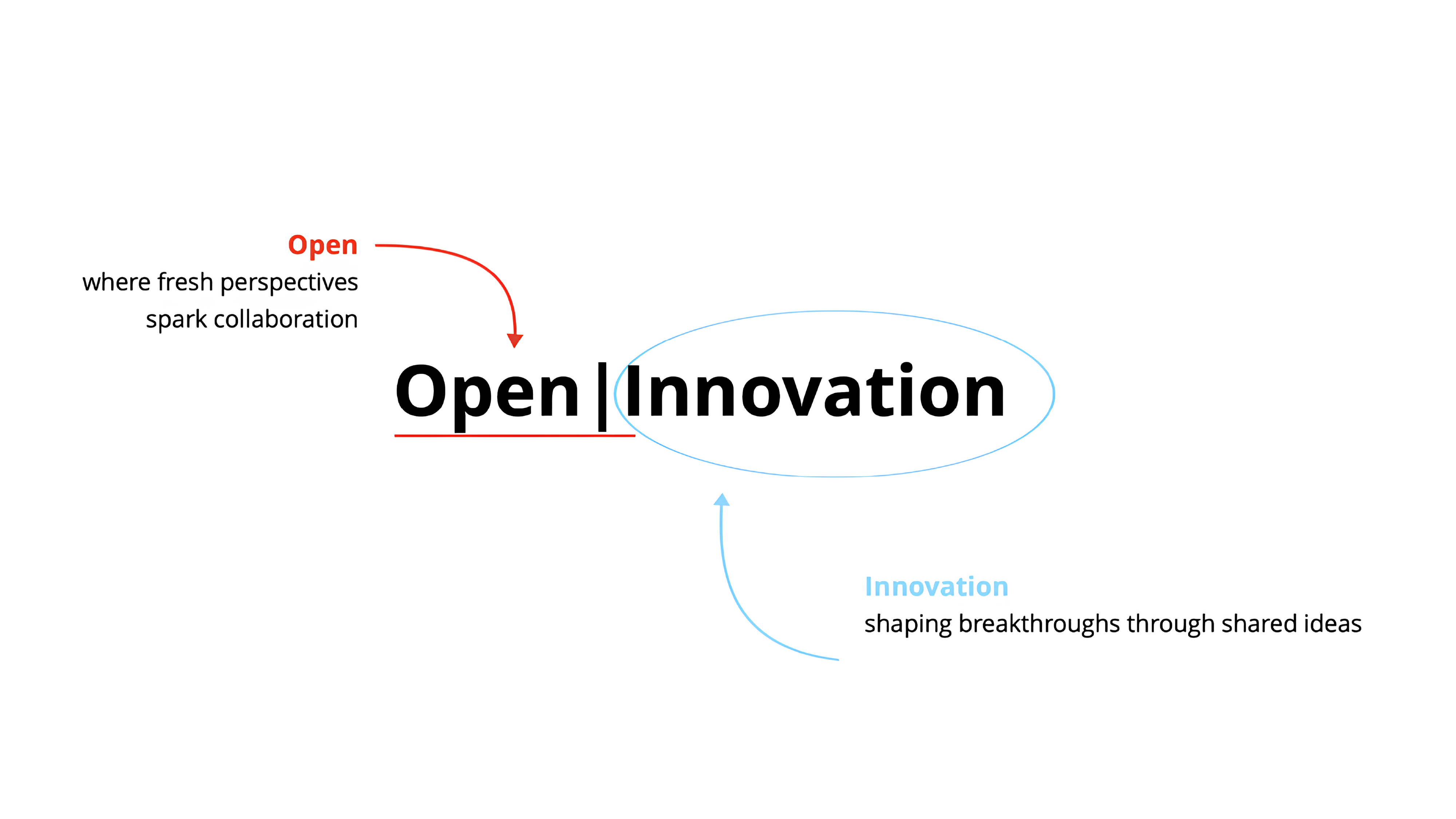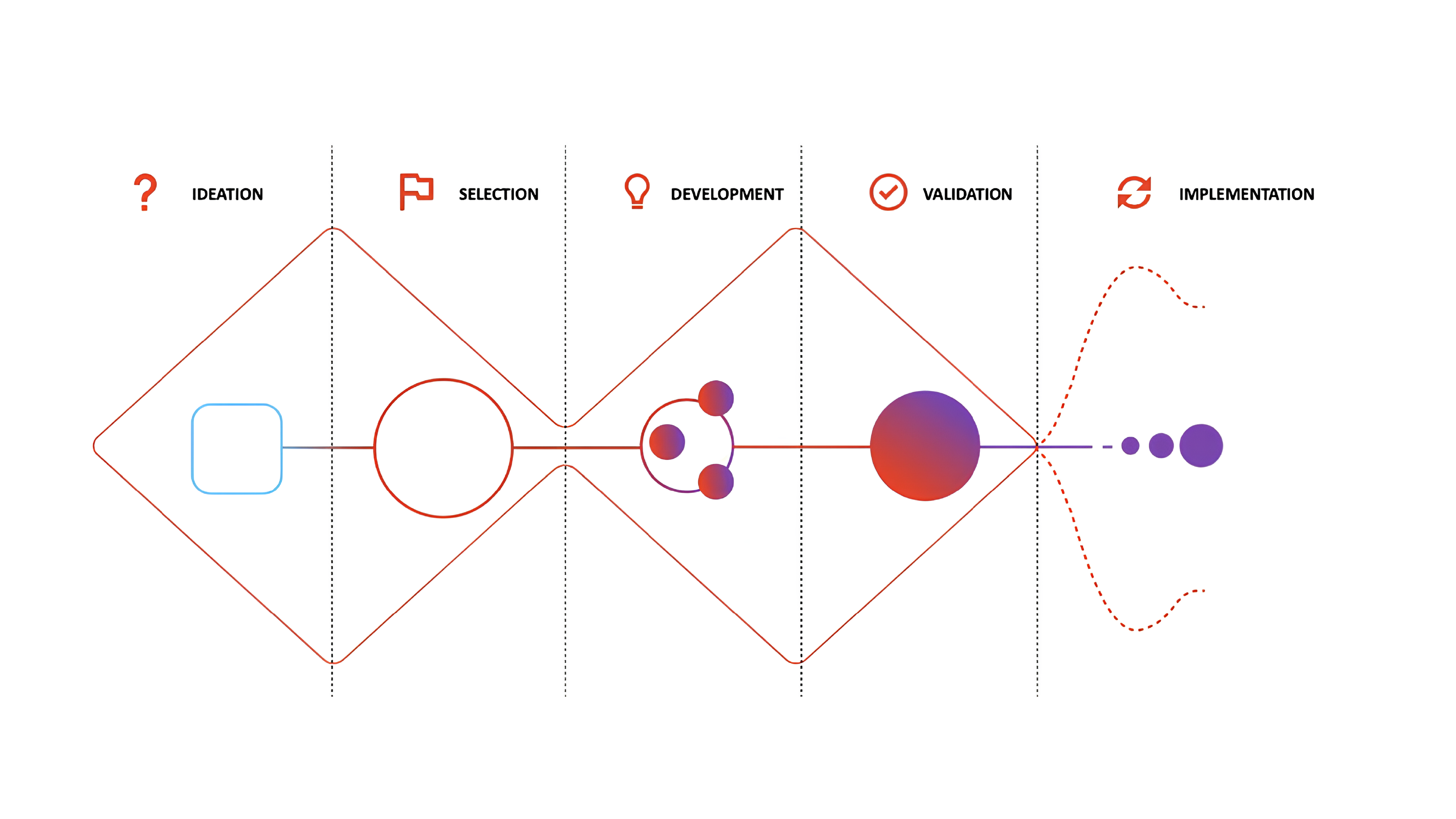Innovation Unleashed:
Breaking Boundaries & Sparking Change
In today’s fast-paced global market, innovation is the engine that drives both growth and resilience. Organizations that neglect to evolve risk being left behind in an environment defined by constant disruption. As technology advances at breakneck speed, traditional, closed-off innovation models no longer keep pace with modern business demands.
Open Innovation (OI) represents a game-changing shift in how companies approach the creative process. By recognizing that valuable ideas can originate both inside and outside an organization, OI emphasizes the power of tapping into external knowledge, resources, and partnerships. Instead of remaining siloed, open innovation breaks down traditional R&D boundaries to unlock a vast network of global talent, shorten development cycles, and accelerate time-to-market for new products and services.
In this article, we walk through OpenKnowledge’s Open Innovation methodology, complemented by real-world projects that illustrate how effective OI can be in enhancing organizational creativity and fostering multi-sector collaboration in a world where staying competitive has never been more critical.
Rethinking Innovation: The OpenKnowledge Way
At OpenKnowledge, we see innovation as more than just new ideas. It’s the process of turning bold thinking into transformative outcomes. For us, Open Innovation (OI) is the central pillar that sparks fresh perspectives, breaks down silos, and propels concepts to fruition.
Why rethink traditional innovation? Conventional frameworks often feel cumbersome, and disconnected from the rapid changes in our world. Our approach shifts this paradigm. We’ve developed a fluid, ever-evolving method designed to adapt to new challenges, ensuring we stay relevant and effective in this landscape of constant flux.
So, how exactly do we make it happen? Let’s take a closer look.

From Ideas to Impact
We’ve shaped our process as a continuous cycle of ideation, testing, and refinement, designed to keep creativity flowing and outcomes grounded in real-world viability.
Ideation
We begin by casting a wide net of possibilities. Through collaborative workshops or online platforms, we invite a range of voices to brainstorm and propose innovative ideas. Diversity fuels ideation; the more varied the perspectives, the richer the results.
Selection
Not every idea advance, and that’s perfectly fine. We assess each concept against criteria like feasibility, scalability, and alignment with strategic goals. Only the strongest contenders move forward for deeper development.
Development
Once promising ideas are chosen, we refine them collaboratively. Leveraging on design-thinking workshops, stakeholder insights, and rapid prototyping, initial concepts gradually mature into well-defined, actionable solutions.
Validation
Real impact requires robust testing. We measure each solution against user needs, market data, and performance metrics. Feedback loops drive iteration until we’re confident that what we’ve built truly resonates.
Implementation
The final step is implementation. Turning ideas into reality. Whether it’s launching a new service, introducing an innovative process, or reshaping organizational culture, we guide a smooth path from concept to execution.
Because this cycle never truly ends, every lesson learned informs the next wave of innovation ensuring continuous improvement, agility, and sustainable success.

Why the OK Methodology Stands Out
Blended Collaboration
In today’s hybrid world, creativity can thrive anywhere. Our approach merges digital and in-person interactions to ensure that all voices are heard, regardless of location. This not only breaks down silos but also encourages real-time creativity from a breadth of viewpoints.
Adaptability at the Core
Rigid models don’t fare well in a landscape defined by constant evolution. Our methodology is built for agility. When circumstances change, we respond and recalibrate. Adapting isn’t just a strategy; it’s the lifeblood of continuous innovation.
Scalability Across Sectors
We’ve seen our approach succeed in many enterprises and public administrations. The guiding OI principles – collaboration, iteration, and openness – remain consistent, while the specific tactics can be tailored to meet any organization’s unique goals and market realities.
Case Studies and Examples
Here, we highlight two key initiatives: one in the public sector and another within private organizations. In both cases, our Open Innovation methodology guided meaningful partnerships, leveraged diverse expertise, and produced inventive solutions tailored to unique contexts.
OI for Public Sector
The aim of this project was to initiate a transformation towards a new way of working, followed by an analysis and improvement of the employee experience. The key challenge was to introduce a new work culture in a traditionally rigid public administration environment. Our approach focused on completely redesigning the dynamics and operational methods within the organization and reimagining the relationship between the institution and its employees. The project was divided into two phases: the first phase involved the creation of a “digital skill backpack” necessary for collaboration, knowledge management, and communication. This was achieved through a training and information path on the tools available within the organization. The second phase involved the employees in a process of idea generation aimed at identifying initiatives to improve the employee experience and make the organization more attractive.
Methodology Application
The development process, particularly during the employee experience improvement phase, followed our Open Innovation framework. We began by mapping the current employee experience to understand the challenges faced at each stage of the employee journey. To do this, we enabled participants to engage in a collaborative brainstorming session, where they were asked to reflect on and identify the key obstacles within each phase of their experience. This digital collaboration allowed participants not only to share insights in real-time but also to continue contributing offline. A unified platform collected everyone’s ideas, fostering a richer and more inclusive discussion.
From this initial brainstorming phase, we selected key initiatives that showed to be the most promising to improve the employee experience. These initiatives were then further developed and validated through a series of digital sessions, along with offline collaboration workshops. During these sessions, participants worked together to refine the selected ideas by focusing on success factors, key activities, and necessary resources to make each initiative viable. This circular, iterative process allowed for continuous adaptation and improvement of the ideas, ensuring that the most effective solutions were refined and aligned with organizational goals. By blending online and offline collaboration, we fostered an environment where feedback could be continuously incorporated, leading to more robust and actionable outcomes.
The outcome of the project was particularly significant, given the traditionally rigid context and low digital maturity of the public administration sector. Despite initial resistance to adopting digital tools, we successfully implemented fully digital processes for both training and idea generation. This allowed us to foster a collaborative environment that went beyond typical in-person interactions, enabling participants to engage in a more flexible and inclusive way.
By shifting the work culture toward greater openness and digital collaboration, we also laid the groundwork for more efficient and innovative public services. In a sector often constrained by bureaucratic procedures, Open Innovation introduces a higher level of transparency and inclusivity, giving employees and citizens alike a stake in problem-solving. This modernization of traditionally bureaucratic processes makes service delivery more effective while empowering citizens to have a more direct role in co-creating policies and initiatives. Ultimately, fostering a sense of ownership and involvement not only delivers practical solutions but also strengthens public trust and engagement that is an essential element in driving long-term, positive societal impact.
OI for Private Sector
Il nostro We set out to transform a traditional company into a dynamic innovation leader in its territory, rooted in the belief that collaboration is the core engine of progress. Our vision was to establish an ecosystem where startups, academic institutions, clients, and industry experts could rally together to co-develop innovative products and services. Guided by Open Innovation (OI) principles, the initiative prioritizes openness, inclusivity, and continuous experimentation, encouraging everyone involved to think beyond conventional boundaries.
A Two-Phase Approach
We knew we needed more than just a straightforward plan to make a real impact with our innovation project. To connect the big-picture vision with the day-to-day details, we split our work into two main stages: Strategic Planning and Operational Execution. This way, we could stay true to the company’s goals while keeping everyone excited and involved.
Here’s a quick look at how we turned our ideas into reality.
The first phase was all about setting the stage, defining the objectives, aligning visions, and constructing a robust foundation. By addressing each component, we laid down a roadmap that would steer the project toward the desired results.
At the heart of our strategy was the company’s vision, which had been collaboratively shaped in earlier discussions. With a clear focus, we set ambitious yet achievable objectives for the Open Innovation initiative:
- Enhancing the company’s reputation as an innovation hub.
- Attracting talents in the industry.
- Fostering a dynamic culture of collaboration and creative exchange.
These goals not only reflected our aspirations but also resonated with our stakeholders, creating a shared sense of purpose.
Defining the Innovation Format: what could make innovation engaging and tangible? The answer came in the form of a multi-day innovation event that blended knowledge-sharing and solution generation. From tech demos to trend discussions, the event’s schedule was designed to accommodate a variety of interests and expertise, ensuring an immersive, multidimensional experience.
Stakeholder Identification: true innovation flourishes when diverse minds converge. We thoroughly mapped out potential collaborators. Startups eager to share pioneering ideas, universities offering cutting-edge research, and forward-thinking clients and industry pros. Tailored engagement strategies kept each stakeholder group motivated and clear on their role, fostering a sense of ownership and collective drive.
Flexibility and precision guided every planning decision. By using a modular format, we anticipated shifts and feedback, enabling us to adapt swiftly. Meanwhile, a structured timeline with defined milestones helped us track progress and maintain focus, ensuring no detail was overlooked.
Operational Execution & Final Design
Building on our strategic foundation, we translated high-level plans into tangible actions through micro-planning. Workshops and collaborative sessions were carefully structured to address clear challenges, define precise objectives, and equip participants with the tools they needed to spark creativity and inclusion. Early stakeholder engagement through pre-event meetings and agenda previews was designed to ensure that everyone arrived aligned, motivated, and ready to make meaningful contributions.
Day 1 was designed to set the stage with market trend discussions and technology showcases that inspired fresh perspectives. On Day 2, co-creative sessions brought participants together to develop actionable solutions, while real-time feedback loops allowed the agenda to flex dynamically based on emerging needs. This agile approach was anticipated to keep the energy high and the outcomes relevant.
Challenges and Solutions
While Open Innovation (OI) offers numerous benefits, its implementation is not without challenges. One of the most common challenges is cultural resistance. In organizations, particularly those with long-established processes, employees and leadership may resist new methods of collaboration, viewing OI as disruptive. To address this, companies must actively foster an open culture by promoting transparency and celebrating early wins to build confidence. Integration of external knowledge can also be difficult, especially in complex organizations. To overcome this, structured processes should be established to capture, validate, and apply external insights into the company’s internal operations. Finally, there is the challenge of resource allocation, dedicating the right teams and tools to manage OI effectively. This can be mitigated by ensuring leadership prioritizes innovation, allocates necessary resources, and continuously monitors the impact.
Conclusion
Open Innovation isn’t just a buzzword. It’s a bold new way of bridging internal expertise with external energy to spark lasting impact. In this overview, we explored OpenKnowledge’s OI methodology, illustrating how systematic collaboration, from ideation through validation, can yield transformative results in both public and private contexts.
As our world continues to accelerate, OI helps organizations remain agile, turning uncertainties into opportunities for growth. By breaking barriers, embracing diverse viewpoints, and co-creating with broader networks, organizations can nurture a culture of sustained innovation and collectively shape the future.
Authors
Merve Kurt e Ottavia Mariani

 9 April 2025
9 April 2025
